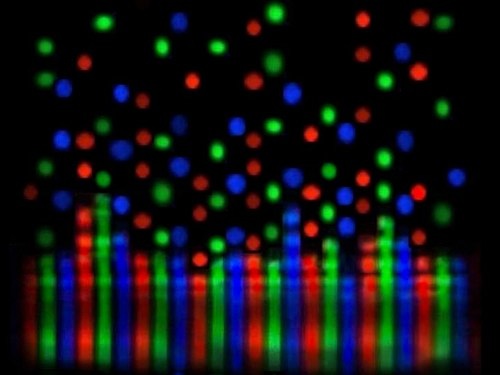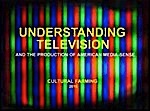How do I understand television?
“I never found any trace of an independent or liberal media anywhere inside the television industry.”
Instead, the people I met there winked and nodded like all business people do. Hey, that why we got into the ‘busyness’ in the first place. My growing curiosities, however, slowly turned to revulsion, which eventually killed my career ambitions. After 25 years and 10 Emmys, I quit the media industry entirely, and determined to understand TV from differing perspectives; through more accurate and critical means.
MEDIA BUBBLES
To help foreground my unique approach to understanding television, all my videos are made in the comfort and privacy of my own home while watching a 15” TV screen. Most every day, when I am not outdoors planting trees, I simultaneously watch four major U.S. 24hour news channels: CNN, FOX News, MSNBC, and CNBC. Up and down, back and forth, whenever I’m at my desk.
I also typically watch a range of live TV events: daily news & talk shows, elections, celebrations, sports, etc., for these are where we typically find informational media production on display in its primary forms. I also collect a wide variety of historical examples of media making. These range from individual artistic expressions to exemplars of common media memory. Daily, to augment these limited informational media sources, I also learn elsewhere: CSPAN, PBS, NPR, NYT, WSJ, WaPo, IBD, The Guardian, The Globe and Mail, among others. I also read philosophy, often Thoreau, in bed. This sketches my daily media bubble.
What I do not watch is the other 90% of TV’s content, which is purposefully fictional and/or anti-informational. I almost never go to the cinema. I very rarely access YouTube. I do not own a cell phone. I have never Facebook’ed, texted, swiped, played a video game, interacted with touch-screens or donned a VR headset. I own no apps. Nor do I subscribe to NetFlix, Hulu, HBO or any of a host of other televisual venues available to North American consumers. I do not read Reddit, Politico, The Onion, Huffington Post, Boing Boing, Mashable, The Drudge Report, Breitbart News. I leave research into these media sources to other more ambitious ethnographers. There are only so many hours in my day.
PAPER AND PENCIL
“My projects, therefore, should be viewed as critical educational methods for self-training -- autodidactic praxis.”
All content within this site was montaged by me alone, although 95% of it, obviously, was previously ‘produced’ by many-many others...mostly anonymous mediamongers. The only two digital tools I still use are, by today’s app-happy standards, so simple they are reminisced much like paper and pencil: iMovie-6 software (2006) and an iMac computer (2009). Content here is collected and presented neither as ‘fine art’ or as ‘bloopers’ -- nor as a trap for the gaze -- but as ethnographic exemplars of the consequences inside historical communicational technique.
STRATEGY AND THINKING
I do this purposefully, since Media and Art can no longer stand under any democratic or revolutionary law of strategy; although the “work of art” can (potentially) be redeemed for countering reification: Art for Thinking. My projects, therefore, should be viewed as critical educational methods for self-training -- autodidactic praxis -- which should be robustly employed inside all media pedagogy today. (For example, Cultural Farming can be a useful method to intellectually assay the “truthiness” of Quenton Tarantino’s (sic) “vermisitude”.) Indeed, when the viable notion of Carnivalesque today is worse than stupidly-produced, critical polyphonic methods like Cultural Farming often reveal that Thinking Art can sometimes be more productive than ‘truth’ itself... and without the use of narcotics.

2. How should viewers watch these video essays?
3. Introduction to the research.
4. What does understanding television mean?
5. How do I understand television?
6. What does using theory mean?
7. Can you discuss one of your videos?
8. What was discovered in this research?
9. What if viewers still don’t ‘understand’ television?
An American
resident of Canada, experimenting with new forms of critical media ethnography in Cultural Farming



